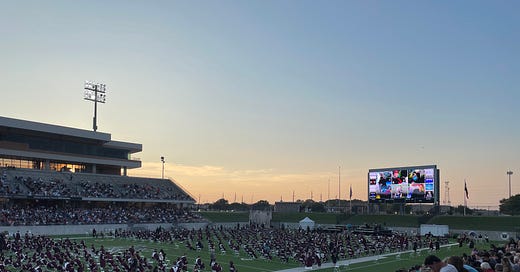I just attended my eldest’s high school graduation. It was the worst graduation I have ever attended, or even seen on video.
Now, to be fair, I’ve only attended a handful of graduations — mostly my own, then small affairs for kindergarten, elementary school, and junior high school. And to be even more fair, the venue was lovely, the graduates excited, a…
Keep reading with a 7-day free trial
Subscribe to Notorious R.O.B. to keep reading this post and get 7 days of free access to the full post archives.





